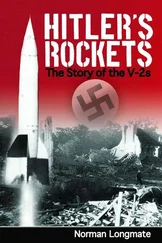Mike Mullane - Riding Rockets
Здесь есть возможность читать онлайн «Mike Mullane - Riding Rockets» весь текст электронной книги совершенно бесплатно (целиком полную версию без сокращений). В некоторых случаях можно слушать аудио, скачать через торрент в формате fb2 и присутствует краткое содержание. Жанр: Старинная литература, на английском языке. Описание произведения, (предисловие) а так же отзывы посетителей доступны на портале библиотеки ЛибКат.
- Название:Riding Rockets
- Автор:
- Жанр:
- Год:неизвестен
- ISBN:нет данных
- Рейтинг книги:3 / 5. Голосов: 2
-
Избранное:Добавить в избранное
- Отзывы:
-
Ваша оценка:
- 60
- 1
- 2
- 3
- 4
- 5
Riding Rockets: краткое содержание, описание и аннотация
Предлагаем к чтению аннотацию, описание, краткое содержание или предисловие (зависит от того, что написал сам автор книги «Riding Rockets»). Если вы не нашли необходимую информацию о книге — напишите в комментариях, мы постараемся отыскать её.
Riding Rockets — читать онлайн бесплатно полную книгу (весь текст) целиком
Ниже представлен текст книги, разбитый по страницам. Система сохранения места последней прочитанной страницы, позволяет с удобством читать онлайн бесплатно книгу «Riding Rockets», без необходимости каждый раз заново искать на чём Вы остановились. Поставьте закладку, и сможете в любой момент перейти на страницу, на которой закончили чтение.
Интервал:
Закладка:
There were other simulators besides the SMSes. Astronauts trained for spacewalks in an enormous indoor swimming pool, the Weightless Environment Training Facility (WETF). The pool contained replicas of the shuttle airlock, cargo bay, and payloads. We dressed in 300-pound spacesuits and were craned into the water, where scuba divers ballasted us with lead until we floated at a fixed depth. This “neutral” buoyancy provided a fair replication of what occurred on real spacewalks, where a push on a tool would result in an equal and opposite reaction. The WETF facilitated the design of tools, handholds, and foot restraints for spacewalkers, all necessary to complete weightless work.
There was also a simulator for MSes to acquire skills with the Canadian-built Remote Manipulator System (RMS). The Manipulator Development Facility (MDF) contained a full-scale mock-up of the shuttle cargo bay (60 feet long and 15 feet in diameter) and a fully functional 50-foot-long robot arm. Huge helium-filled balloons served as weightless payloads. MSes would stand in a replica of the shuttle’s aft cockpit, look through the aft windows, and operate the robot arm controls. We would lift the balloons from the cargo bay and/or stow them in the bay in simulations of orbit activities.
Robot arm operations were challenging. A camera at the end of the arm transmitted images to a screen in the cockpit. MSes would look at these images and simultaneously use two hand controls to bring the arm’s business end to a successful grapple with the target. Using these hand controls while tracking a moving target on a display screen (how we would grapple a free-flying satellite) was like patting your head and rubbing your stomach at the same time. It required lots of practice. To assist us in developing tracking skills, the engineers provided a moving target that hung from the ceiling of the building.
In one of my MDF sessions, I employed my newly acquired tracking skills to tease Judy Resnik. I knew from the schedule that she was next up for the training and watched for her to enter the building. When she did, I maneuvered the end of the robot arm so as to track her with the camera at its tip. She glanced up and saw the huge boom dipping and swaying and twisting to her every turn and knew exactly what I was doing. She stopped, and I flew the arm outward as if it were reaching for her, then slowly tilted the wrist joint so the camera scanned her body from head to toe. When she entered the cockpit, she smiled and said, “You’re a pig, Mullane.” I smiled back and pretended not to understand, but of course she was right.
While I eagerly looked forward to SMS, WETF, and MDF simulations, there was one simulator I could have done without…. NASA’s zero-G plane, nicknamed “the Vomit Comet.” This was a modified Boeing 707 aircraft. Large sections of seats had been removed and the interior surfaces padded. After taking off from Ellington Field, the pilot would steer for the Gulf of Mexico, where he would fly the craft in a roller-coaster trajectory. While climbing toward the top of each “hill,” he would push forward on the controls so the trajectory of the plane exactly matched the pull of gravity. The result was a thirty-second free fall in which everything in the plane was weightless. Unrestrained astronauts in the back would float in their padded chamber. At the end of the dive, the pilot would perform a 2-G pullout that would smash everybody to the padded floor. He would then advance the throttles, climb back to 33,000 feet, and start all over. On a typical mission the process would be repeated about fifty times.
It took only one flight in the jet to understand why it was named the Vomit Comet. The plane was a barf factory. Just climbing aboard, the nose would detect a faint odor of bile. Like cigarette smoke that cannot be removed from the drapes of a two-pack-a-day addict, the smell of stomach fluid had permeated the very aluminum structure of the machine. Even when its aged bones are someday sold for scrap and melted down, the recycled aluminum will still bear the aroma of our stomach acid.
I quickly learned that the videos NASA released to the public of Vomit Comet–borne astronauts laughing and tumbling were recorded on the first couple dives because by the tenth weightless parabola someone would have already retreated into his or her seat and be vomiting copiously. Like the chain reaction of a nuclear explosion, the odor of fresh barf would drift through the cabin and send a few more over the edge. Those new smells would combine to affect yet more people. Even those who tried to block the smell by breathing through their mouths could not shield their senses, for the guttural sounds of the damned would fill the volume like a pack of barking German shepherds. By the twentieth parabola there were few smiles remaining. By the thirtieth parabola, some would be wishing the flight controls would freeze and the plane would smash into the sea at 600 knots and put them out of their misery. But through it all there would be the lucky minority, the immune who would smile and whoop and tumble and ask for more. I hated them.
I never barfed on any of my Vomit Comet rides, but I had wanted to on all of them. From the fifth dive onward my gorge was continually at the back of my throat and only by a super-human effort was I able to keep it there. I sucked on Life Savers by the gross, hoping the constant swallowing reflex they generated would keep my stomach where it belonged. I knew I would have felt better had I periodically retreated to the rear of the plane and vomited, but that would have been a sign of weakness and a violation of rule number one: Better dead than look bad. Besides, there were female TFNGs unaffected by the maneuvers. The image of me strapped into the back with my head in a barf bag while Anna Fisher and Judy Resnik did loop-de-loops was too much for my testicles to take. So I faked it. When Judy suggested we do simultaneous somersaults I smiled through gritted teeth and nodded agreement, all the while cursing my balls for their bravado.
Of all of NASA’s simulators, none was more memorable than the toilet trainer. It occupied a room next to the fixed-base SMS so astronauts could practice on it when they were in those training sessions. And practice was certainly needed.
The shuttle toilet was basically a vacuum cleaner. (Do not try this at home.) The urinal was a suction hose with attachable funnels to accommodate male and female users. Because of its strong suction (one marine proposed marriage), the toilet checklist contained a warning for males not to allow the most cherished part of their anatomy to get too deep into the funnel. If an inattentive astronaut’s appendage got sucked into the hose, he would find himself qualified for a second career as a circus freak working under a banner heralding, “See the world’s longest and skinniest penis!”
Urine was collected in a holding tank and dumped into space every few days. I would later find these urine dumps spectacular to watch. The fluid would freeze into thousands of ice crystals and shoot into space like tracer bullets.
The toilet solid waste collection feature also used airflow as a flush medium. A plastic toilet seat sat atop a “transport tube” approximately four inches in diameter and a couple inches in length. Users attached themselves to the seat with padded thigh clamps then pulled a lever to open the transport tube cover and turn on the steering air jets. The waste would be directed into a large bulbous container directly beneath the user. Astronaut solid waste is not dumped outside but is retained in the toilet, no doubt to the great relief of the rest of humanity. If solid waste is ever dumped into space, it will give new meaning to the phenomenon meteor shower.
One feature of the toilet made it particularly difficult to use…the narrow opening of the solid waste transport tube. This was an engineering necessity to achieve an effective downward airflow, but it made transport tube “aim” critical to waste collection success. A user not perfectly aligned in the center of the tube could find their feces stuck to the sides of the tube and smeared over their rear end. To help the astronauts find their a-holes, NASA installed a camera at the bottom of the toilet simulator transport tube. A light inside the trainer provided illumination to a part of the body that normally didn’t get a lot of sunshine. A monitor was placed directly in front of the trainer with a helpful crosshair marker to designate the exact center of the transport tube. In our training we would clamp ourselves to this toilet and wiggle around until we were looking at a perfect bull’s-eye. When that was achieved we would memorize the position of our thighs and buttocks in relation to the clamps and other seat landmarks. By duplicating the same position on a space mission we could be assured of a perfect “shack” (fighter pilot lingo for a perfect bomb drop). Needless to say, this training took a lot of the glamour out of being an astronaut.
Читать дальшеИнтервал:
Закладка:
Похожие книги на «Riding Rockets»
Представляем Вашему вниманию похожие книги на «Riding Rockets» списком для выбора. Мы отобрали схожую по названию и смыслу литературу в надежде предоставить читателям больше вариантов отыскать новые, интересные, ещё непрочитанные произведения.
Обсуждение, отзывы о книге «Riding Rockets» и просто собственные мнения читателей. Оставьте ваши комментарии, напишите, что Вы думаете о произведении, его смысле или главных героях. Укажите что конкретно понравилось, а что нет, и почему Вы так считаете.












